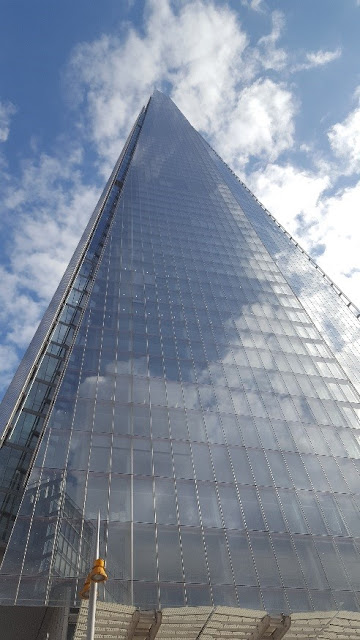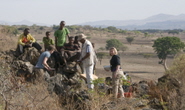‘A celebration of the research and achievements of Professor Willy Aspinall’ was a one-day celebration organised by the Cabot Institute to commend the career of a valued UK scientist and Bristol Professor.
Professor Willy Aspinall CMG is retiring after a 60-year career that has seen him travel the world, advise governments and receive some of the highest accolades a scientist can receive. Over 50 people attended the one-day event, which comprised a light-hearted mix of history, science and personal reminiscence.
 |
| Frank Savage, ex-governor of Montserrat |
Willy is possibly best known for his use of the ‘expert elicitation’ technique. The method involves synthesising the opinion of experts, which can then be used as a mechanism to help predict the occurrence of a typically-rare event. The technique has been used in policy making for a range of natural hazards such as earthquakes and volcanic eruptions, and has been an integral part of decision making in numerous crises around the globe.
Many of these crises will be familiar to the reader, with some having vast social and economic impacts. Perhaps the most well known in Europe was the Eyjafjallajokull ash crisis, which grounded air traffic across the continent. During the eight-day air space closure, Willy was one of a handful of experts who advised the UK government’s response.
Yet Willy’s role as a valued risk advisor was preceded by decades of influential work that represents astonishing variability and versatility. Willy began his working life as a physicist, receiving a PhD from Durham University in the 60’s. His physics background led him to take a job in 1970 in the Seismic Research Centre (SRC) in Trinidad and Tobago in which he remained for over a decade.
‘Aspi’, as he was sometimes known amongst his team, set up and maintained the seismic network on the island and surrounding areas throughout the busy decade. His colleague Dr Joan Latchman, who travelled from Trinidad to the event in Bristol, described the time; ‘for the entire decade it was excitement, non-stop’. During this period, Willy and his team of researchers advised the government on numerous earthquakes and volcanic eruptions while also breaking down the post-colonial culture that had lingered on in aspects of life at the SRC.
Willy’s time in Trinidad and Tobago wasn’t his only dance with Caribbean volcanism. One of the defining moments in Willy’s career, and one for which he was as appointed a companion to the Order of St Michael and St George by the Queen in 2016, was his work in Montserrat.
In August 1995 Willy was sent to Montserrat as adviser to the Governor shortly after the 11,000-person island’s volcano began to show signs of activity. When he arrived he was faced with a challenging situation. The scientists monitoring the volcano had developed a difference of opinion as to the volcano’s likely course of action. Part of his job, was to disseminate the jargon-heavy arguments to both the decision makers, and the general public. The then-governor of Montserrat, Frank Savage, spoke at Willy’s celebration and gave a personal account of the huge positive impact Willy had on the crisis management: ‘Willy understood Caribbean culture and traditions which made a significant and favourable impact with the local community’.
Frank wasn’t the only one grateful to Willy for his efforts. In fact several volcanologists working on Montserrat thanked Willy for saving their lives after he ordered them out of the exclusion zone where they had been working. Dr Amanda Clarke was one of these volcanologists. Unable to make it from Arizona to the event, she recorded a message to be screened during the day. In it, she thanks Willy for saving not only her life, but the lives of numerous people who he encouraged to evacuate at the last minute despite considerable personal risk.
Among others who paid a digital tribute to Willy’s inspirational career included the Prime Minister of Trinidad and Tobago, Keith Rowley. Indeed, the sheer number of people from different backgrounds demonstrated the truly phenomenal cross-disciplinary geographical-reach of Willy’s work; from nuclear energy in Japan to melting Antarctic ice sheets to Italian earthquakes.
The faces in the audience represented industry professionals, academic colleagues as well as new scientists working in the field he has helped to carve out. Consequently, the day was replete with gratitude and genuine praise for a man whose cricket-loving, quick-witted personality will undoubtedly be missed as he enters his well-deserved retirement.






